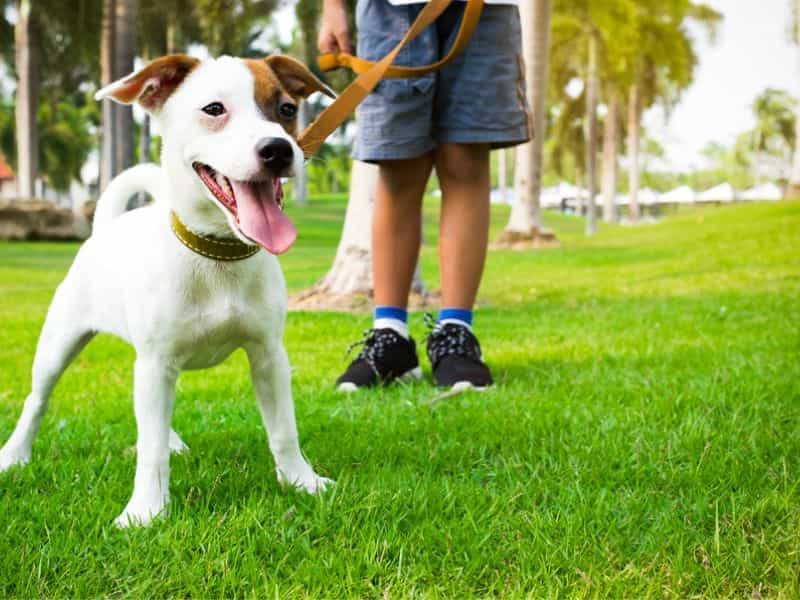Best Grass for High Traffic
For golf courses, parks, playgrounds, backyards, and other areas that experience high traffic, you need a hardy turf grass that can withstand the amount of use the turf undergoes. Wear tolerant turf grasses are able to effectively resist or recover from foot traffic pressure, allowing you to maintain a healthy, green lawn.
5 Best Grasses for High Traffic
The best grasses for lawns with high foot traffic areas like playgrounds, public parks, golf courses (both fairways and greens), and back yards where pets and children often play include Zoysia grass, Bermuda grass, Tall Fescue, Perennial Ryegrass, and Kentucky bluegrass.

Here`s a Summary Table of best grasses for high foot traffic lawns;
| Grasses for High Traffic | Features |
| Tall Fescue | Durable due to its coarse blades and upright, bunch-type growth habit. Has good drought tolerance but, recovers slowly from severe injury. |
| Bermuda grass | Boasts of superior wear tolerance compared to other warm-season grasses. Has excellent wear recovery due to fast growth via lateral runners. Has good drought and heat resistance. |
| Perennial ryegrass | Tough blades and a strong root system- make it wear-tolerant. Has a bunch-type growth habit. Has high-maintenance requirements. |
| Zoysia grass | Form durable turf due to dense growth patterns. Has low drought tolerance and is best mowed at 1.5 inches. |
| Kentucky bluegrass | Wear-tolerant due to its self-spreading growth habit that promotes fast recovery from wear. Has excellent cold-hardiness. Prefers deep, infrequent watering. |
1. Tall Fescue
Tall fescue has great foot traffic tolerance due to its tough, upright blades and bunch-type growth habit. This cool-season turf grass also has deep roots, allowing it great tolerance for physical stressors. Apart from its wear-hardiness, this cool-season turf grass can also adapt to temperature fluctuations and is also drought-tolerant.
Despite having good wear tolerance, tall fescue doesn’t recover fast from severe injury. This is due to the fact that it has a bunch-type growth habit and lacks lateral runners to facilitate self-spreading.
2. Bermuda grass
Bermuda grass has an extensive root system which makes it durable and highly resistant to high traffic damage. This warm-season turf grass also has excellent drought and heat tolerance, making it one of the most stress-resistant turf grasses.
Bermuda grass’ durability even in high traffic areas can also be attributed to its quick recovery rate. This turf grass is able to quickly grow back via lateral runners called stolons and rhizomes. Bermuda is best mowed at 1.5-2.5 inches
Note: Research studies by the University of California’s agricultural division note that Hybrid Bermuda grass has the best recovery rate from moderate wear and severe injury; relative to other common California turf grasses.
Take note though that Bermuda grass’ susceptibility towards foot traffic damage increases whenever the temperatures drop. As such, it fares best in high traffic turfs situated in the South where temperatures rarely drop too low.
3. Perennial ryegrass
Another cool-season turf grass that’s great for high-traffic areas like golf courses and playgrounds is perennial ryegrass. Its exceptional wear resistance can be attributed to its coarse blades, bunch-type growth habit, and robust root system. Perennial ryegrass is also drought-hardy, decently tolerant of light shade, and quickly recovers from dormancy when irrigated.
On the downside, though, perennial ryegrass is quite high-maintenance compared to the other high-traffic grasses on this list. Regular mowing, irrigation, and fertilizing are necessary to keep it thriving. The recommended mowing height for perennial ryegrass is 1.5-2.5 inches.
Read More: Pros and Cons of Ryegrass
4. Zoysia grass
Zoysia grass is another grass type that’s great for high traffic turfs due to its great wear recovery for severe injury. It grows back fast from severe traffic damage via rhizomes and stolons. Zoysia is beneficial and identified through thick mats of turf that can better withstand pressure from foot traffic.
According to a study by the University of California’s agricultural division, Zoysia grass has the best wear tolerance relative to other California turf grasses. It doesn’t fair as well, though, in terms of recovery from moderate wear; ranking lower than Bermuda grass, tall fescue, and perennial ryegrass. You should, therefore, irrigate your Zoysia turf deeply but infrequently to promote faster recovery.
Note: Zoysia grass also has low drought tolerance and needs more water than most other warm-season grasses. Meanwhile, the recommended mowing height for this type of grass is 1½ inches.
5. Kentucky bluegrass
Kentucky bluegrass is a cool-season turf grass that’s also commonly recommended for high-traffic spots due to its great durability and wear tolerance. This self-spreading grass species forms dense sod that can withstand immense physical pressure. Kentucky bluegrass is also just as cold-hardy as it is wear-hardy.
Kentucky bluegrass thrives in fully sunny conditions but is tolerant of mild shade. Being a cool-season turf grass, it’s best planted in the fall. To maintain its durability/ wear tolerance, you should water and mow Kentucky bluegrass accordingly. Deep, infrequent irrigation is recommended, while the appropriate mowing height is 2-2.5 inches.
Note: Kentucky bluegrass typically goes dormant during heat waves or periods of extensive drought.
How to select the best grass type for San Antonio lawns
When choosing the best grass for your San Antonio lawn, go for a warm-season turf grass variety. San Antonio is located in the South where the weather is warm for most of the year and winters are mild.

The grass you pick should also be drought-tolerant variety, as San Antonio experiences extended periods of dry weather each summer. Finally, a turf grass species that is tolerant toward alkaline soil conditions is also preferable, as this region has alkaline soils.
That being said, some of the best turf grass choices for San Antonio lawns include the following warm-season grasses:
- Zoysia grass
- Bermuda grass
- St. Augustine grass
Signs of high traffic damage and Impacts on your lawn
Common signs of high foot traffic damage on a lawn include brown/dead grass, flattened out grass, yellowing grass, grass that’s thinning out, and a turf that’s increasingly being invaded by weeds.
Brown or dead grass
Many find it difficult to tell the difference between grass browning caused by disease and that caused by heavy traffic. Dead grass due to diseases typically appears as perfect rings.
However, if you have sporadic patches of brown or dead grass on your lawn, it’s likely that the turf is suffering from high traffic damage. The grass may also flatten out due to the weight pressure exerted on it by the lawn’s users.
Note: Apart from these physical signs, another common sign of high traffic damage on lawns is soil compaction. Though not directly notable, a lawn with compacted soil will have grass that’s thinning out or yellowing, and will also have more weeds.
Sparse growth or grass thinning out
As the soil becomes more compact due to heavy foot traffic, the roots find it harder to penetrate the soil particles, thus growing shallower. Shallow roots lead to reduced shoot growth as the shallow roots can’t absorb enough water and nutrients to support higher volume of leaf growth.
Grass blades turning yellow
Grass that’s turning pale green-yellow may also be a sign of compaction caused by heavy traffic on the lawn. As the roots grow shallow due to compaction, they cannot take in sufficient amounts of essential minerals from the soil. Photosynthesis is, therefore, affected, resulting in leaf blade yellowing.
Higher rates of weed invasion
As the turf grass grows thinner due to compaction caused by high foot traffic, its natural capability to crowd out weeds reduces. As such, weeds that are adapted to thriving even in compacted soils start to take over. Common examples of compaction-adapted weed plants include clover, knotweed, and crabgrass.
Tips to repair and prevent high traffic lawn damage
To fix high traffic lawn damage, you need to overseed the turf. Overseeding not only enables new grass to grow on the traffic-damaged patches but also enables the turf to grow thicker for enhanced durability and wear resistance.
Note: After overseeding the bare spots, regularly water the lawn for faster root establishment.
Rather than waiting for your lawn to suffer high traffic damage before you take action, it’s better to be proactive and prevent this type of lawn damage from happening in the first place. To prevent high traffic damage to your turf, consider adopting the following practices:
- Since a considerable amount of traffic damage is usually caused by mower wheels, consider using pneumatic tires on your ride-on lawn mower.
- Reduce lawn traffic when the soil is wet, as the grass is more susceptible to damage at such times. Keep your children and pets away from the lawn until it’s considerably dry.
- Occasionally undertake core aeration to relieve soil compaction caused by high foot traffic.
References
- M. Ali Harivandi, University of California’s Division of Agriculture and Natural Resources: Turf grass Traffic and Compaction: Problems and Solutions
- Oregon State University, Department of Horticulture: Perennial ryegrass Lolium perenne L.

![Bermuda Grass Mowing Height [How Short Can You Cut?]](https://lawnmodel.com/wp-content/uploads/2020/12/Bermuda-grass-mowing-height-how-short-can-you-cut-bermuda-grass-768x527.jpg)
